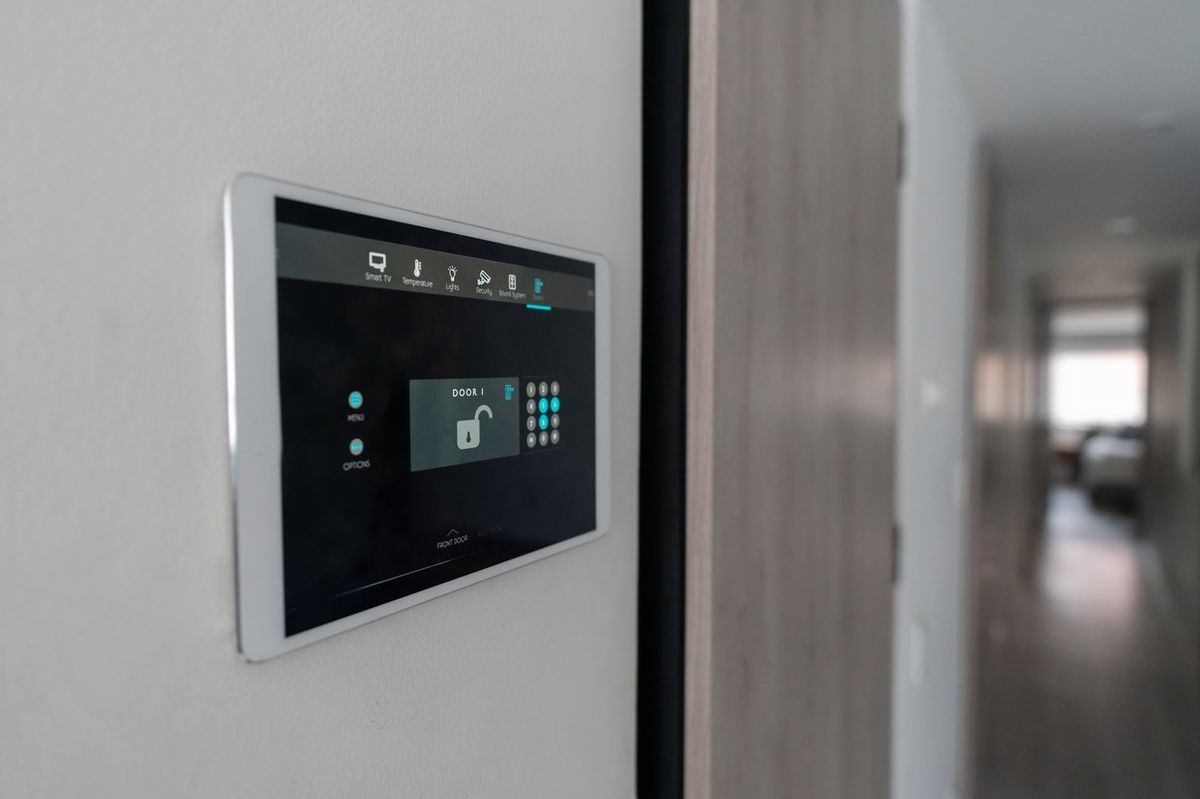
iStock
Smart Home Safety: How to Protect Your Gadgets and Investments
From cybersecurity to insurance coverage, learn simple but essential steps to protect your smart devices—and your home—from digital threats, damage, and financial loss.

From cybersecurity to insurance coverage, learn simple but essential steps to protect your smart devices—and your home—from digital threats, damage, and financial loss.
In today’s connected homes, smart gadgets—like voice assistants, smart thermostats, security cameras, and smart locks—are more than just conveniences. They're essential tools that enhance security, comfort, and energy efficiency. But these devices also come with their own set of risks. From potential cyberattacks to damage from power surges or theft, smart home gadgets require more than just Wi-Fi to stay protected. For homeowners and renters alike, understanding how to safeguard these devices—both digitally and financially—is key.
Here’s a comprehensive guide on how to protect your smart gadgets and why securing your home with the right insurance policies is just as important.

Why Protecting Smart Devices Matters
iStockSmart home devices collect and transmit data that could be exploited if they fall into the wrong hands. Hackers might gain access to your cameras, disable your alarms, or even unlock your smart locks. Beyond privacy breaches, physical damage from power surges, water leaks, or theft can be costly.
These gadgets are often expensive and integral to the operation of your home. Ensuring their security not only protects your investment but also your safety and peace of mind.

Gryphon AX Router with Wi-Fi 6 secures wireless signal to your smart devices.
GearBrainCybersecurity should be a top priority for any smart home. Follow these best practices:

Physical Protection for Smart Devices - install camera high on your house.
GearBrain
Don’t forget physical threats. Here’s how to protect gadgets from physical damage or theft:

The Role of Insurance in Smart Home Protection – Benefits for Homeowners
iStock
Your home—whether owned or rented—is likely your most valuable investment. Insurance is essential not just for the structure or furnishings, but also for the smart devices that power your daily life.
Home warranties differ from insurance. They typically cover wear-and-tear damage to major systems and appliances, including smart thermostats or HVAC-connected devices. If your smart device is integral to your heating or plumbing system, a warranty could help offset repair or replacement costs. However, read the fine print—warranties often exclude certain devices or models.

Even renters invest in smart home tech. Whether you have a smart door lock or a home assistant, these devices still need protection.
Many landlords do require renters’ insurance as a condition of the lease. It protects their property indirectly while also ensuring that tenants can recover from losses without incurring a legal dispute.
Like with homeowners insurance, be sure your policy’s personal property limits are high enough to cover your devices.
Smart home devices bring innovation and comfort to our lives, but they also demand vigilant protection, both physically and financially. Cyber threats, accidents, and theft can happen to anyone, but taking simple precautions and securing the right insurance policies can help you stay ahead.
Your home is your castle, and increasingly, a digital fortress. Protecting that fortress means investing in strong security measures, keeping your tech updated, and ensuring your investments, whether owned or rented, are backed by comprehensive coverage.
By taking the time to secure your smart devices and understand your insurance options, you’ll enjoy the benefits of a connected home with fewer worries.
Check out The GearBrain, our smart home compatibility find engine. It can help you find, buy, and connect any smart device. It can even help you find other smart thermostats, devices, or systems compatible with your existing smart devices, such as Google Assistant and Amazon Alexa-enabled devices.
GearBrain Compatibility Find Engine
A pioneering recommendation platform where you can research,
discover, buy, and learn how to connect and optimize smart devices.
Join our community! Ask and answer questions about smart devices and save yours in My Gear.
